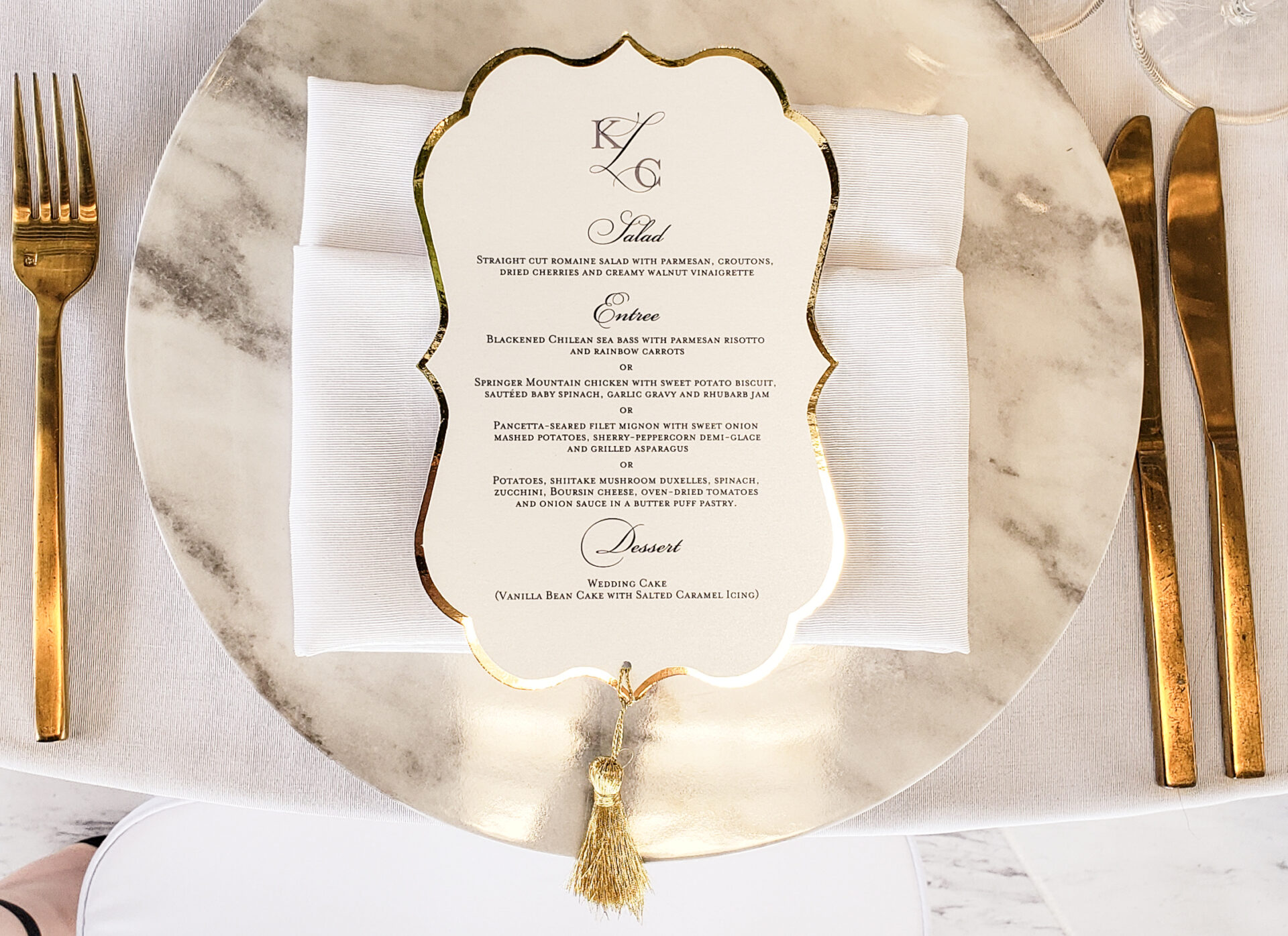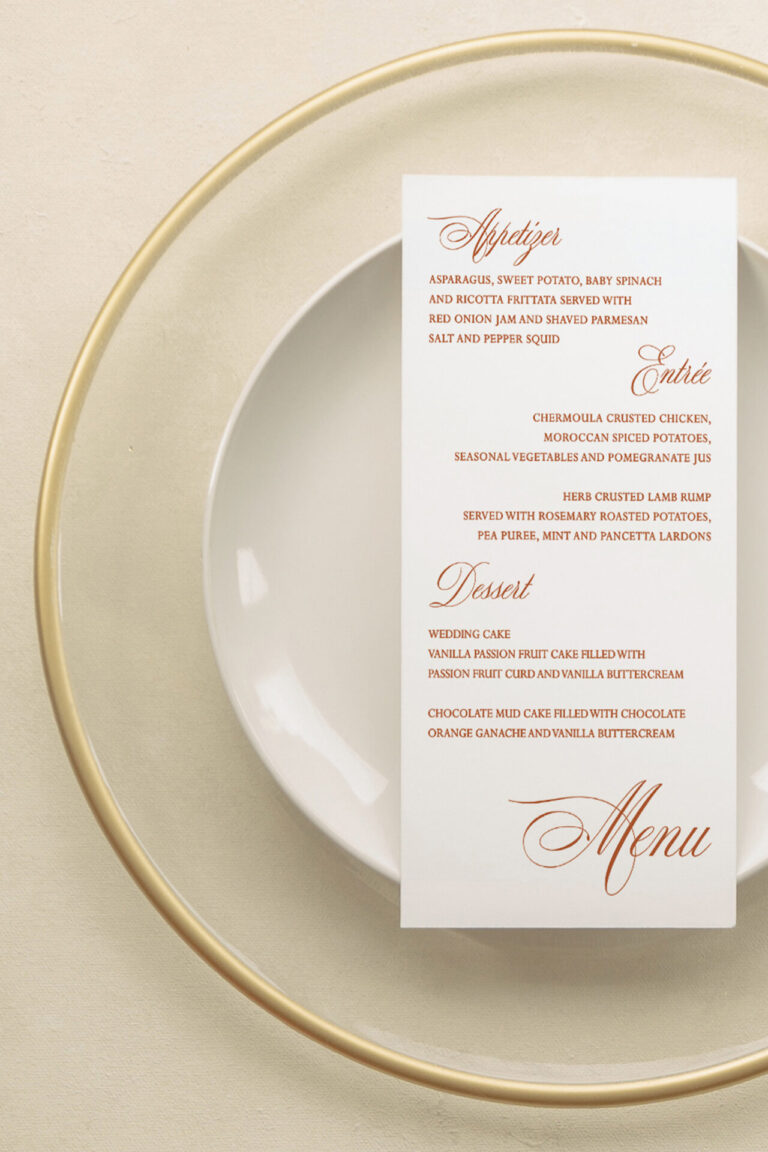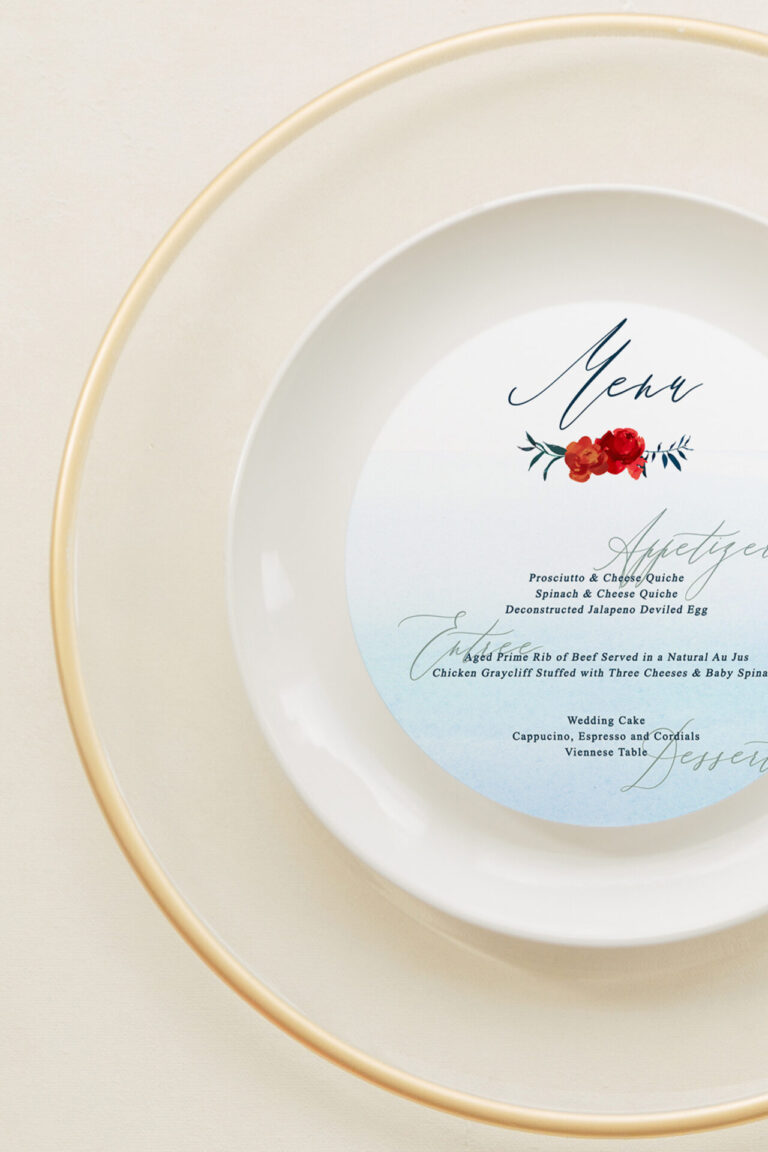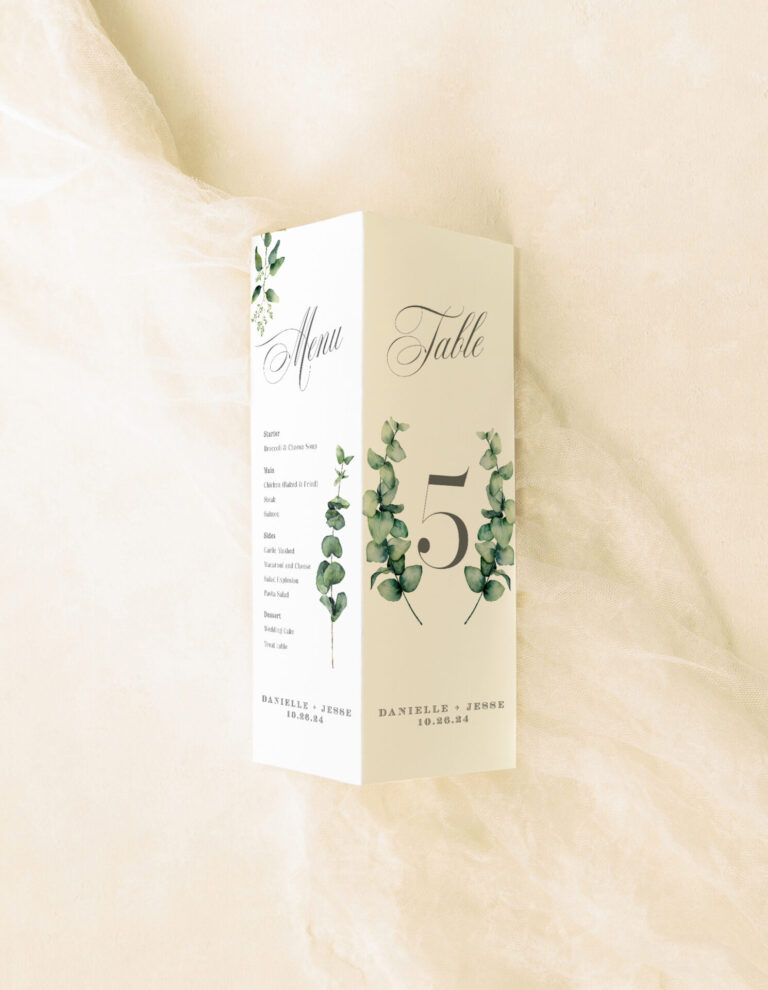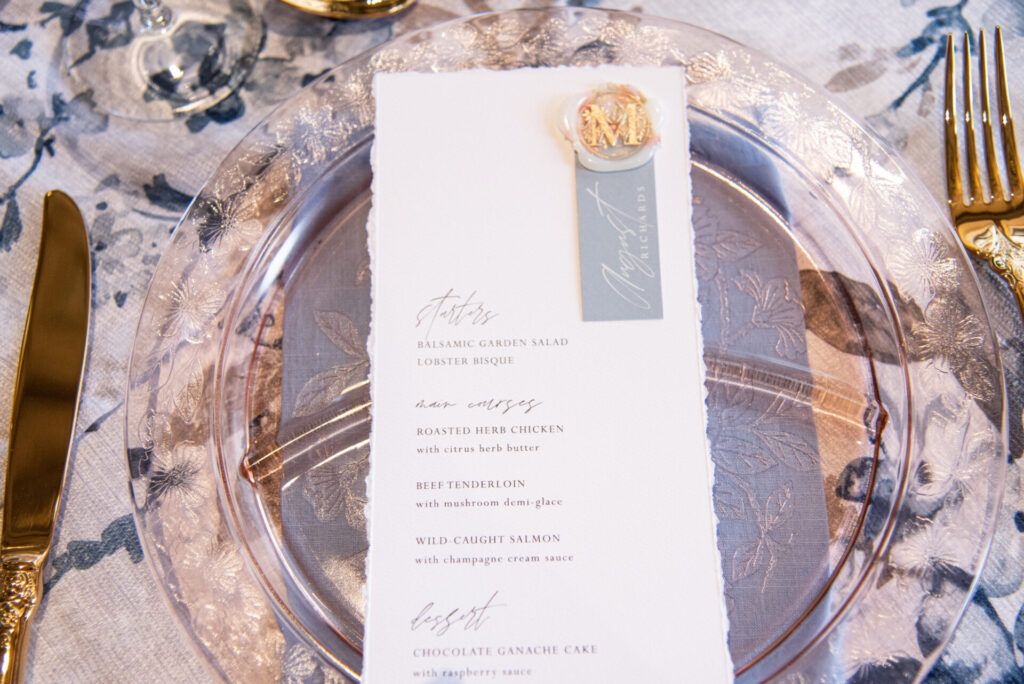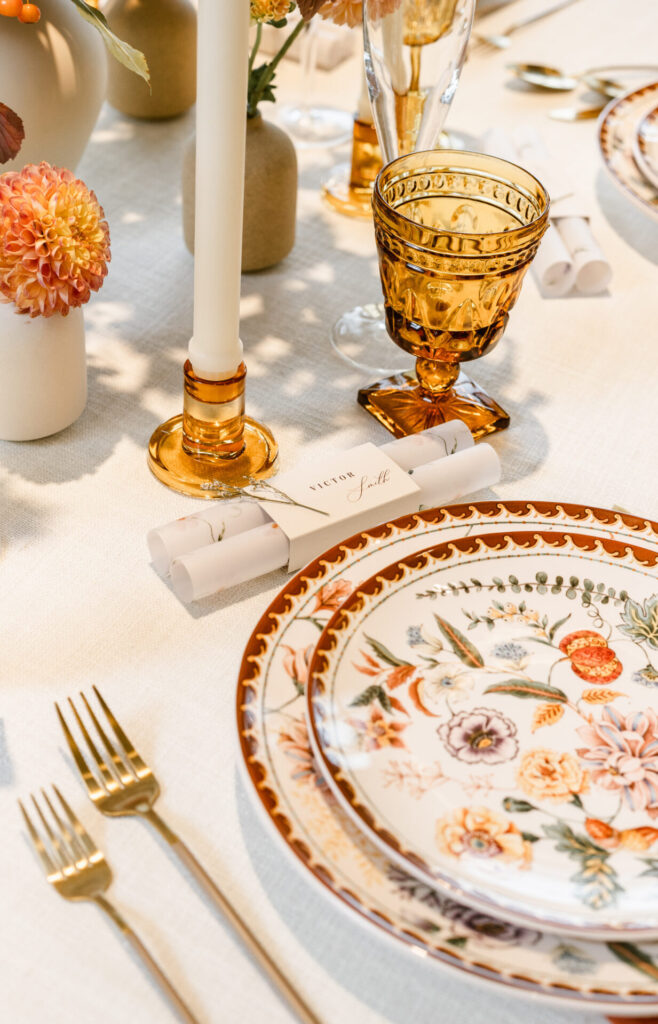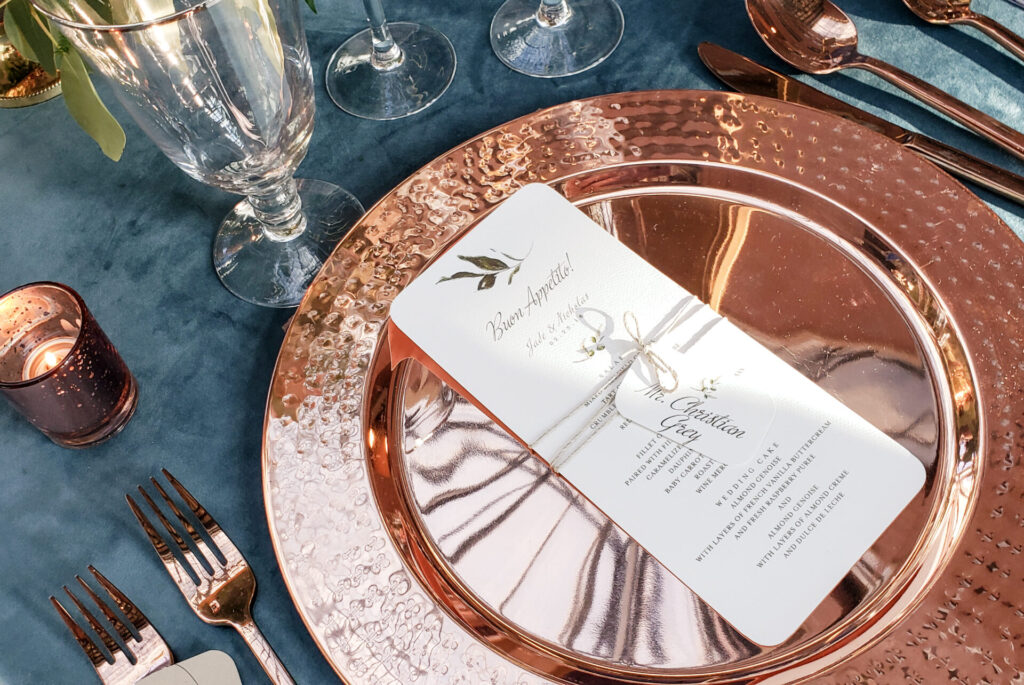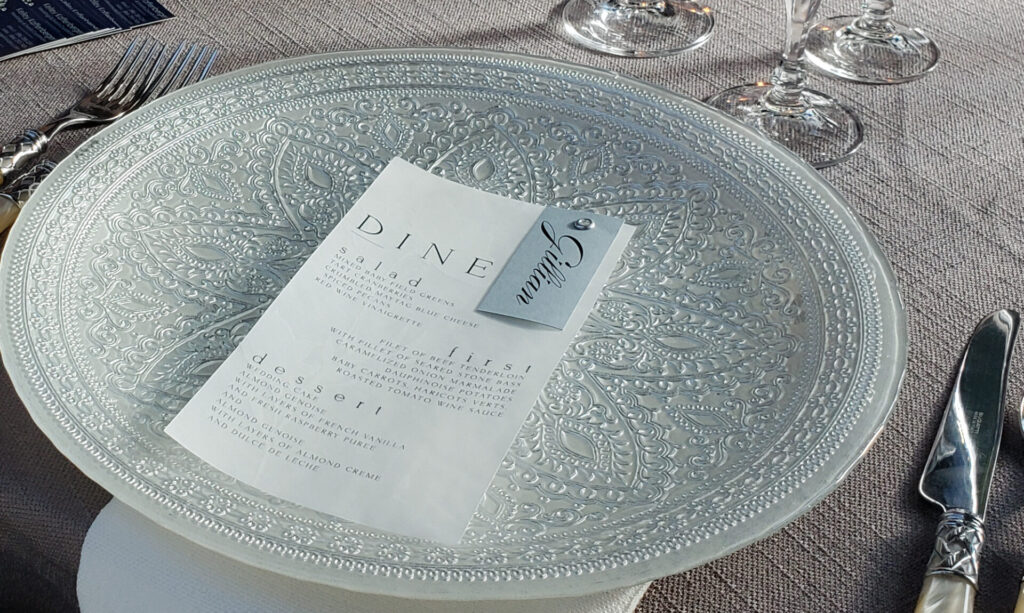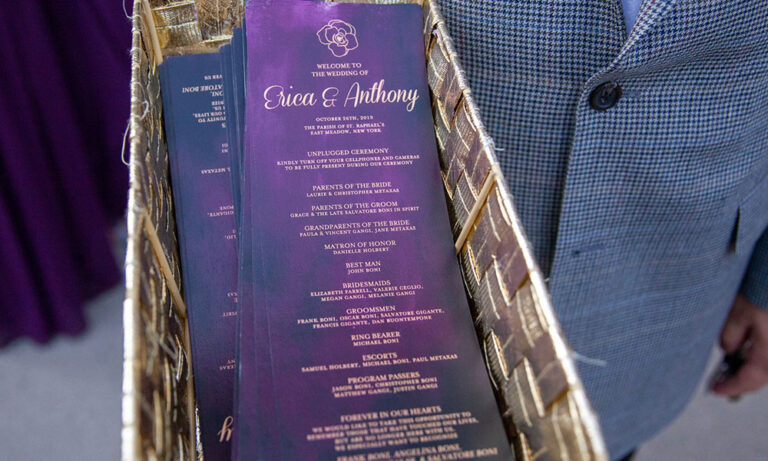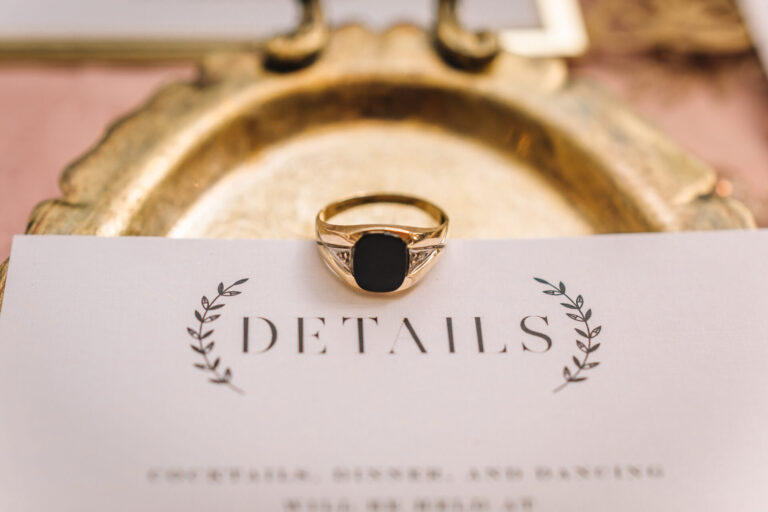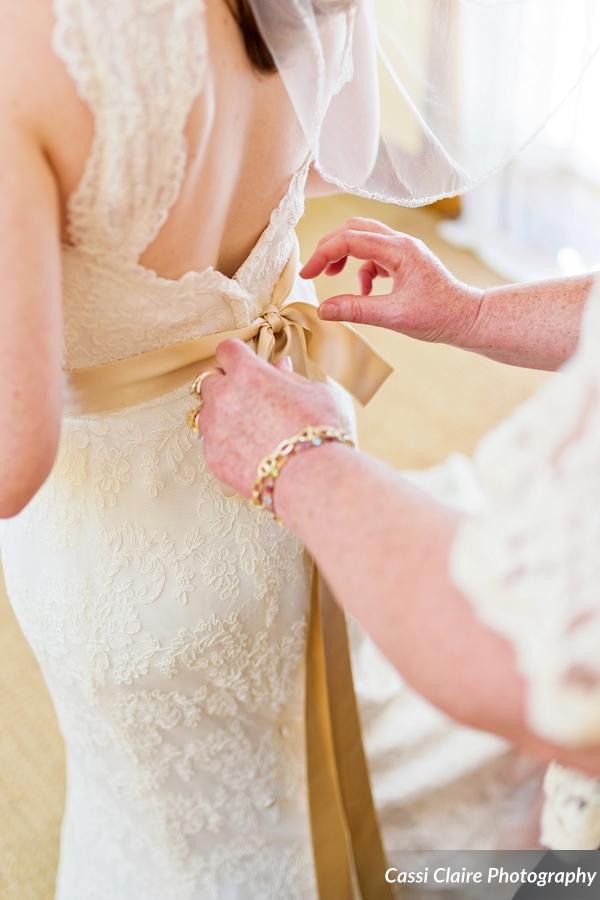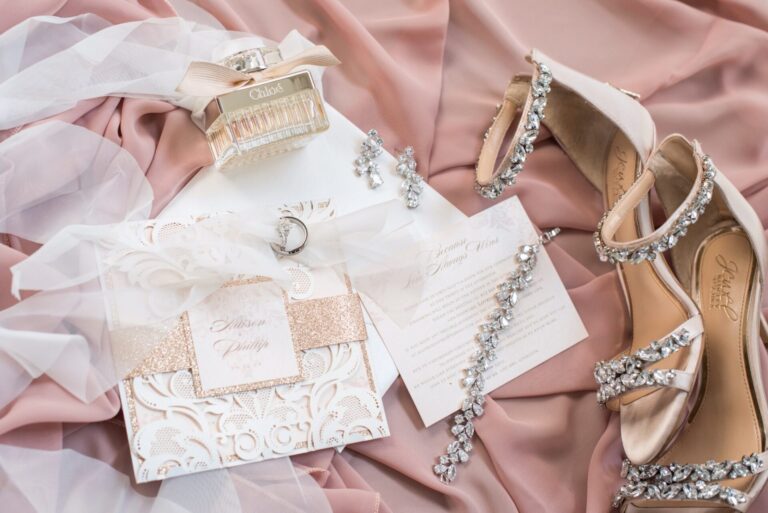The Complete Guide to Wedding Menus: Per Setting vs. Center Table menu ideas
Wedding menu can be a lovely idea and addition to your table decor, guiding guests through the meal and Choosing the right wedding menu ideas and designs can set the perfect tone for your celebration, giving guests a taste of the elegance and style you’ve curated. With thoughtful wedding menu placement and wording, you can seamlessly incorporate these details into your reception’s decor while enhancing the dining experience. In this guide, we’ll explore wedding menu ideas, strategic placement tips, creative wording, and the option of a center table menu to inspire a cohesive and polished look for your special day.
browse all our menu options…
Why Use a Wedding Menu?
Menus at weddings and events add a layer of formality, helping guests anticipate the meal and catering to those with dietary preferences. They also offer a decorative element that ties into the table setup and overall theme, making the meal experience even more memorable.
A wedding menu is especially helpful when serving multi-course meals or offering a variety of options. Menus can also serve as a useful tool for notifying guests of potential allergens, vegetarian options, or specialty drinks being served.
Per Setting Menus vs. Center Table Menus
1. Per Setting Menus
Per-setting menus are individual menus placed at each guest’s seat. This setup creates a personal experience, giving each guest their own guide to the meal. Per-setting menus can also double as a place card or a decorative element, adding to the elegance of the table.
- Best For: Formal weddings, black-tie events, plated dinners, or any gathering with multiple courses. They work well in sit-down dinners where guests are seated for the entire meal.
- Pros:
- Personal Touch: Guests feel special with a personalized menu.
- Easier for Dietary Needs: Guests with dietary restrictions can quickly see their options.
- Enhanced Decor: When paired with place settings, they add a polished look.
- Cons:
- Higher Printing Costs: Each guest receives a menu, which can add to the overall stationery budget.
- Space Constraints: They require space on the table, which can be limiting with elaborate place settings.
- Event Examples: Per-setting menus are popular for weddings, formal engagement dinners, or sit-down bridal showers where you want an upscale dining experience.
2. Center Table Menus
Center table menus are placed in the middle of each table, often as a shared menu that several guests can reference. This style is more communal and requires fewer menus overall, making it cost-effective for large events.
- Best For: Family-style or buffet meals, casual gatherings, or events with a relaxed, communal vibe. They’re ideal for rustic or garden weddings, as well as bridal showers and rehearsal dinners where guests are less formal.
- Pros:
- Budget-Friendly: Fewer menus are required, saving on printing costs.
- Flexible Placement: Center menus can be displayed creatively—on easels, in frames, or even on table signs.
- Less Table Space Needed: Works well with decorative centerpieces without taking up too much room at each place setting.
- Cons:
- Shared Viewing: Guests may have to pass the menu around, which could be inconvenient.
- Less Personal: It may not feel as personalized as per-setting menus.
- Event Examples: Center table menus work well for more casual events like backyard weddings, family-style rehearsal dinners, rustic bridal showers, or outdoor celebrations with a communal feel.
When to Use Wedding Menus (and When They Aren’t Needed)
Wedding menus can be a beautiful addition, but they’re not necessary for every event. Here’s a breakdown of when to include menus:
- Weddings: Menus are most commonly used at weddings, especially for sit-down dinners with multiple courses. They’re essential if you want guests to know what’s being served, and they make a great keepsake.
- Bridal Showers: Menus can be a nice touch for formal bridal showers, particularly for high teas or seated luncheons. They add sophistication and give guests a preview of the meal.
- Rehearsal Dinners: Menus are also popular at rehearsal dinners, especially if the meal is plated or features multiple courses. They’re less necessary for buffet-style setups but still add a classy touch.
- Casual or Buffet Events: For casual or buffet-style events, menus are generally optional. However, one or two center table menus can still be useful, allowing guests to see their options before getting in line.
- Cocktail-Only Receptions: If you’re serving only hors d’oeuvres or a limited selection of finger foods, menus may not be needed. Instead, you might opt for a single sign listing drink and food options near the bar.
Creative Ideas for Wedding Menu Presentation
- For Per Setting Menus:
- Combine with Place Cards: Print the guest’s name on the menu to make it serve as both a place card and a menu.
- Layered with Dinnerware: Place the menu atop the napkin on each plate to create an elegant focal point at each setting.
- Attached to a Favor: Attach the menu to a small favor, like a sprig of herbs or a tiny jar of honey, for a charming touch.
- For Center Table Menus:
- Frame the Menu: Place the menu in a decorative frame for each table or centerpiece area.
- Display on Easels: Small easels can hold the menu upright, making it easy for everyone at the table to see.
- Incorporate into Centerpieces: For a unique look, work the menu into the centerpiece by using floral holders or placing it on a small stand amid the arrangements.
Final Thoughts
Whether you choose per-setting or center table menus, the style you select should complement your wedding’s formality, dining style, and guest experience. Menus enhance the dining experience and help convey your wedding theme in a meaningful way. From intimate bridal showers to grand wedding receptions, a thoughtfully designed menu is both practical and decorative, ensuring your guests feel welcomed and well-informed.

